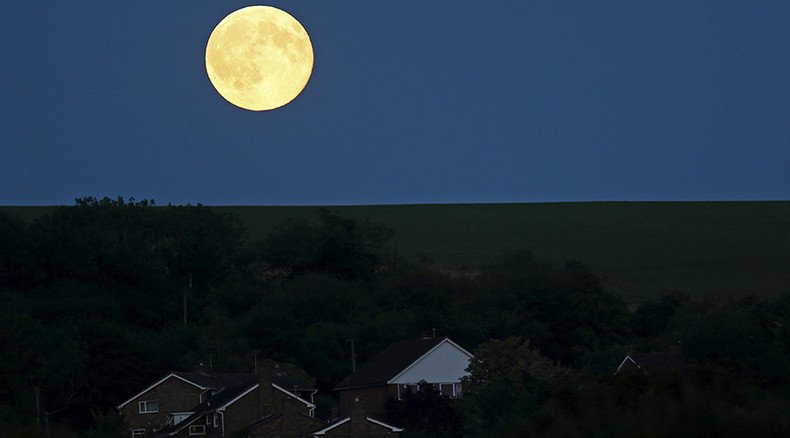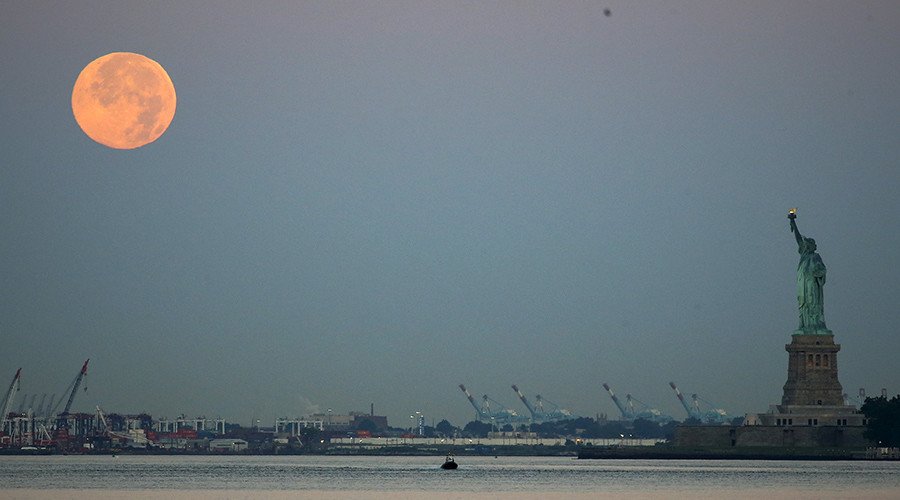Stunning images reveal Blue Moon’s true colors (PHOTOS)

A rare celestial phenomenon dazzled people around the world, as the Blue Moon lit up the skies to disprove its name.
A Blue Moon, while apparently not truly blue in color, could be observed on Friday night. It looked like a regular ivory full moon. Yet, according to the calendar, it was the second full moon in a month, an event that will next occur only on January 31, 2018.
My photos of the #BlueMoon last night over New York City. #NYCpic.twitter.com/nuXBJOyWc7
— Anthony Quintano (@AnthonyQuintano) August 1, 2015The first full moon this month occurred on July 2. As the lunar calendar is shorter than the Gregorian calendar likely to be hanging on your wall, this event sometimes happens in months that are 31 days long.
READ MORE: ‘Unusual red streaks’ spotted on Saturn’s Tethys (PHOTOS)
The phrase “once in a blue moon” is commonly used to describe rare events, however, the modern definition appeared only in the 1940s thanks to James Hugh Pruett, who simply described it as the “second [full moon] in a month” in an article published in Sky & Telescope magazine.

“Most Blue Moons look pale grey and white, just like the Moon you’ve seen on any other night. Squeezing a second full Moon into a calendar month doesn’t change its color. Nevertheless, on rare occasions the Moon can turn blue,” NASA said in a press release.
#BlueMoon tonight! According to modern folklore, second full month in a month is "blue." http://t.co/oO1rpJV0akpic.twitter.com/xajdOMWAnc
— NASA (@NASA) August 1, 2015According to NASA, a real change in the Moon’s color requires some kind of natural disaster, such as volcanic eruptions or massive forest fires. People had an opportunity to see a genuinely blue Blue Moon back in 1883, after a volcano in Indonesia called Krakatoa erupted, spewing volcanic ash into the top layers of the atmosphere, which then acted like a filter.
READ MORE: Fly me to the moon… in 4 hours? EM Drive could ‘revolutionize space travel’
However, “red Blue Moons are far more common than blue Blue Moons,” says NASA, explaining that aerosols, which act as a filter to scatter blue light, are much more common in the Earth’s atmosphere than ash.
Day 126 Once in a #BlueMoon. When in space 4 a yr everything is possible Goodnight from @space_station! #YearInSpacepic.twitter.com/rhGU3ktaRG
— Scott Kelly (@StationCDRKelly) July 31, 2015











